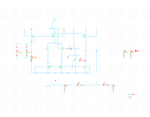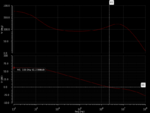tenso
Advanced Member level 4
I was simulating the open loop gain of an op amp circuit and I used the following setup measured in Allen's book.
The resistance and cap values are chosen to be large so that the 3dB frequency is low. Sure enough, it gave the expected value of my open loop gain of around 70 dB.
When I get rid of the feedback path and ground the inverting pin, I am getting a gain of around 44dB when I run an AC analysis. Why the difference and shouldn't open loop gain be measured with no feedback?
The resistance and cap values are chosen to be large so that the 3dB frequency is low. Sure enough, it gave the expected value of my open loop gain of around 70 dB.
When I get rid of the feedback path and ground the inverting pin, I am getting a gain of around 44dB when I run an AC analysis. Why the difference and shouldn't open loop gain be measured with no feedback?


